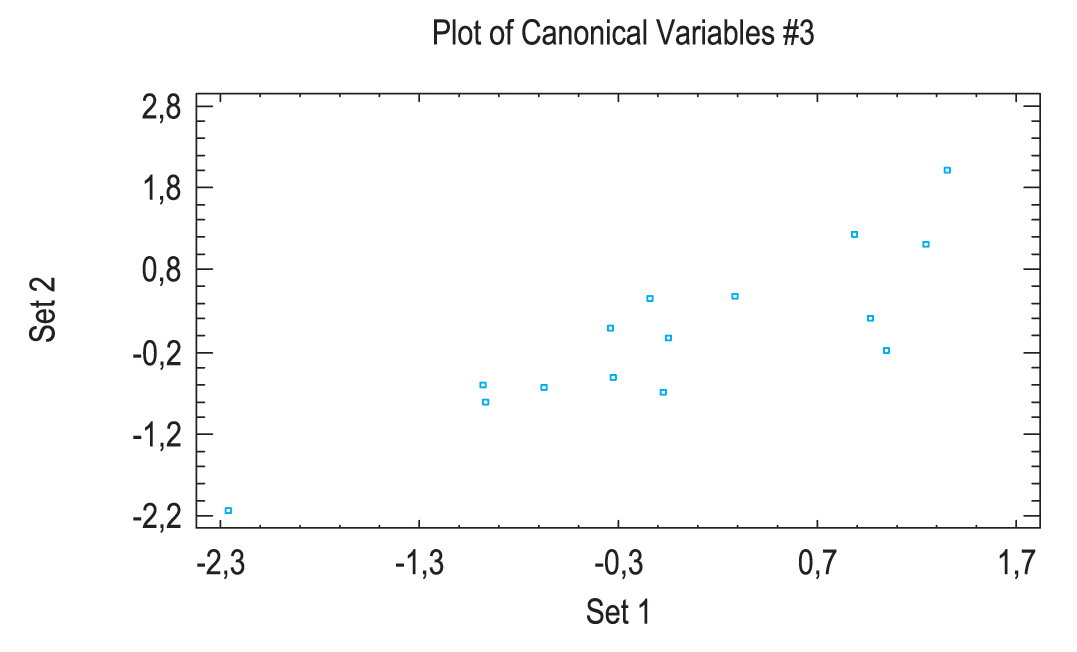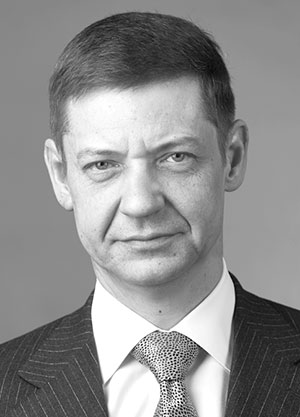Efficiency of competitive activity depending on blood flow parameters in middle distance runners
Фотографии:
ˑ:
Ph.D., Associate Professor V.V. Ehrlich1
Dr.Biol., Professor A.P. Isaev2
Ph.D., Professor V.I. Zalyapin3
1Institute of Sport, Tourism and Service, South Ural State University, Chelyabinsk
2Research Center of Sport Science, South Ural State University, Chelyabinsk
3South Ural State University, Chelyabinsk
Keywords: predictors, blood components, canonical correlation, variability.
Introduction. It is known [3, 7, 8] that the indicators of success and performance of highly skilled athletes are conditioned by the specific nature of their pre-contest training and various individual factors. At the same time, biological and physiological indicators of athlete's physical fitness demonstrate the regularities that are common to the set of experiments, but are not inherent of individuals due to the natural statistical scatter detected during these experiments.
It should be noted that blood-flow indices are among the key indicators of athlete's physiological status. In this paper we attempted to study the long-term adaptive changes in the blood circulatory system of runners with due regard to their performance. We determined a significant impact of strenuous training loads (STL) on the psychophysiological and molecular and cellular patterns of the systems of motor control, blood circulatory system, O2 transport, metabolites, and on the functional and biochemical energy supply of performance under hypoxic conditions in general. There are certain preconditions of influence of the mobilization and vibration vectors of action on the endogenous processes associated with acclimatization, which warrant further study.
The purpose of the study was to identify the determining factors based on the study of canonical correlation.
Materials and methods. The athletes' functional status was monitored using the system analyzer (Kharkov, Ukraine). 15 middle-distance runners (800, 1500 m) and 15 steeplechasers were examined. We used the technology1 to develop local-regional muscular endurance (LRME) under aerobic conditions by means of the gravity and ballistic wave spectra combined with power load, stretching and swimming.
Graduated muscular load, when performed systematically, leads not only to an increase in physical endurance, but also to an increase of anoxia tolerance [6]. Consequently, stability is achieved by means of variability of the body states of the examined athletes. A total of 33 blood flow indicators1 were selected for analysis, along with the corresponding performance indicators of highly skilled middle distance runners and steeplechasers. The relationship between the selected indicators was evaluated by the method of canonical correlations [1, 2, 5]. We calculated the eigenvalues of correlation matrix [1, 9]. Canonical correlations were analyzed based on the indices of the main blood components, previously studied by the authors [4]. We used athletes' success rates to form the first (smaller) group of indicators - variables T_800 (s), T_1500 (s), T_3000 - the corresponding distance time, the main components - to form the second one - PCOMP_1 - PCOMP_12, thoroughly studied and described in [4]. The volume of the experimental data sample we used - 15.
The calculation data are presented in Tables 1, 2, 3. Table 1- canonical correlations, Table 2 and 3 - coefficients of canonical variables.
Table 1. Canonical correlations
|
No |
Eigenvalue |
Canonical correlation |
Wilk's Lambda |
Significance |
|
1 |
1.0 |
1.0 |
2.37E-19 |
|
|
2 |
0.992 |
0.996 |
0.00214 |
0.0243 |
|
3 |
0.747 |
0.864 |
0.253 |
0.6055 |
A total of three pairs of canonical variables were generated: , for the number of indicators present in the group of performance indicators:
The table of canonical correlations lists the assessed correlations between each group of linear combinations included into the variables analysis. Special mention should be made of the Wilk's Lambda test statistic [5, 9]. The last column in Table 1 is for significance of canonical variables. The first two pairs statistically significantly correlate at the level of 95%. The relationship between the canonical variables in the third pair cannot be considered statistically significant, despite a relatively high level (0.864) of the corresponding canonical correlation.
Coefficients of canonical variables are represented in Tables 2 and 3.
[1] The technology is confirmed by the Certificate of State Registration of Software Application № 2015610676 "Stimulation and development of local-regional endurance in athletes''
[1] vascular permeability index; skin blood flow, % of total blood flow; blood flow in other organs, %; pulmonary vascular resistance; lymphocytes, %; lactic acid concentration, mmol/Ll; β-lipoproteins, g/l; low-density lipoproteins (LDL), mmol/l; high-density lipoprotein (HDL), mmol/l; triglycerides, mmol/l; muscle testosterone, mcmol/day; amylase, g/l/hr; acetylcholine, mkg/ml; glutamic acid, mmol/l; creatine kinase of the heart; sH-; body fluids,%; AST/ALT ratio, c.u.; total bilirubin, mcmol/l; conjugated bilirubin, mcmol/l; unconjugated bilirubin, mcmol/l; urine estrogen nmol/day; global regulation of mitosis; glomerular filtration rate of endogenous creatinine, ml/min; glomerular filtration rate of endogenous creatinine in view of age, sex, body weight; cystatin C, mg/l; blood pH, c.u.; circulating blood volume (CBV), ml/kg; O2 transport, ml/min; index Tiffeneau, %; O2 consumption; CO2 release, ml/min; CO2 concentration in venous blood, %.
Table 2. coefficients of canonical variables of athletes' performance
|
Sl.No. |
Variable |
i=1 |
i=2 |
i=3 |
|
1 |
T_800 |
0,958 |
-0,299 |
-0,0033 |
|
2 |
T_1500 |
-0,241 |
-0,99 |
0,0812 |
|
3 |
T_3000 |
0,0774 |
0,102 |
-1,01 |
Coefficients of canonical variables of the main components are presented in Table 3.
Table 3. Coefficients of canonical variables of the main components
|
Sl. No. |
Variable |
i=1 |
i=2 |
i=3 |
|
1 |
PCOMP_1 |
-0.12 |
0.602 |
0.148 |
|
2 |
PCOMP_2 |
0.176 |
0.27 |
0.504 |
|
3 |
PCOMP_3 |
-0.161 |
-0.092 |
0.252 |
|
4 |
PCOMP_4 |
0.017 |
-0.52 |
0.257 |
|
5 |
PCOMP_5 |
-0.197 |
-0.00153 |
-0.2 |
|
6 |
PCOMP_6 |
0.406 |
0.0899 |
-0.033 |
|
7 |
PCOMP_7 |
-0.385 |
0.00756 |
-0.0184 |
|
8 |
PCOMP_8 |
-0.0558 |
-0.174 |
-0.531 |
|
9 |
PCOMP_9 |
-0.332 |
0.361 |
-0.197 |
|
10 |
PCOMP_10 |
0.536 |
0.103 |
0.0503 |
|
11 |
PCOMP_11 |
-0.157 |
0.255 |
0.0207 |
|
12 |
PCOMP_12 |
-0.389 |
-0.204 |
0.479 |
Relative values of the coefficients may testify to the degree of impact of particular indicators on aggregative variables [2].
Figure 1 illustrates the ratio of the first (on the left) and second (on the right) pairs of canonical variables.

Fig. 1. Ratio of canonical variables
It is to be emphasized that the third pair of canonical variables correlates much worse than the first two ones (Fig. 2).

Fig. 2. Ratio of canonical variables in the third pair.
In the first pair of variables, as already mentioned, the correlation coefficient is and, consequently, these variables are identical, while in the second pair it is , which results in some (insignificant) differences in the values of canonical variables.
Conclusion. Canonical variables structured in such a manner contribute to studying group relationships between blood flow and performance indicators of middle distance runners and steeplechasers.
References
- Ayvazyan, S.A. Prikladnaya statistika. Issledovanie zavisimostey (Applied Statistics. Research of dependencies) / S.A. Ayvazyan, I.S. Enyukov, L.D. Meshalkin. – Moscow: Fizkul'tura i sport, 1985. – 488 P.
- Anderson, T. Vvedenie v mnogomerny statisticheskiy analiz (Introduction to multivariate statistical analysis) / T. Anderson. – Moscow: GIFML,1963. – 500 P.
- Isaev, A.P. Sport i srednegor'e. Modelirovanie adaptivnykh sostoyaniy sportsmenov: monografiya (Sport at middle altitudes. Simulation of athletes' adaptive conditions: monograph) / A.P. Isaev, V.V. Ehrlich. – Chelyabinsk: YuUrGU, 2013. – 425 P.
- Isaev, A.P. Sistemno-sinergeticheskie podkhody v integratsii teorii adaptatsii i individualizatsii sportivnoy podgotovki v tsiklicheskikh vidakh sporta, razvivayushchikh vynoslivost' (System-synergetic approaches to integrate theory of adaptation and individualization of sports training in cyclic endurance sports) / A.P. Isaev, V.V. Ehrlich, A.S. Aminov, A.V. Nenasheva, Alboradih Ahmed Abudi Hussein // Vestnik Yuzhno-Ural'skogo gosudarstvennogo universiteta Seriya «Obrazovanie, zdravookhranenie, fizicheskaya kul'tura». – 2014. – V. 14. – № 4. – P. 20-32.
- Kendall, M.J. Mnogomerny statisticheskiy analiz i vremennye ryady (Multivariate statistical analysis and time series) / M.J. Kendall, A. Stuart. – Moscow: Nauka GRFML, 1976. – 736 P.
- Kolchinskaya, A.Z. Interval'naya gipoksicheskaya trenirovka v sochetanii s traditsionnoy sportivnoy trenirovkoy – effektivny metod podgotovki sportsmenov (Interval hypoxic training combined with standard sports training as effective athletic training method) / A.Z. Kolchinskaya // Nauka v olimpiyskom sporte. – 1995. – № 31 (2). – P. 44-55.
- Mishchenko, V.S. Reaktivnye svoystva kardiorespiratornoy sistemy kak otrazhenie adaptatsii k napryazhennoy fizicheskoy trenirovke v sporte: monografiya (Reactive properties of cardiorespiratory system to determine adaptation to strenuous physical training in sport: monograph) / V.S. Mishchenko, E.N. Lysenko, V.S. Vinogradov. – Kiev: Naukoviy svit, 2007. – 351 P.
- Seluyanov, V.N. Podgotovka beguna na srednie distantsii: ucheb. posobie (Training of middle distance runners: study guide) / V.N. Seluyanov. – Moscow: TVT Divizion, 2007. – 112 P.
- Spravochnik po prikladnoy statistike (Handbook of applied statistics) / Ed. by E Lloyd, U. Lederman. – Moscow: Fizkul'tura i sport, 1990. – P. 2. – 526 P.
Corresponding author: erlikh-vadim@mail.ru


